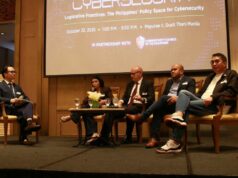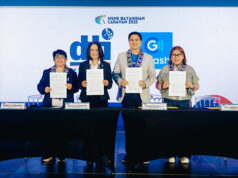A blueprint for a powered future
The Department of Energy (DoE) has set a grand plan back in 2017, named the Philippine Energy Plan 2017-2040 (PEP), aimed towards preparing the country in the future to generate and secure more energy and address a foreseen growing demand.
According to the DoE’s 2017 annual report published on its Web site, PEP is “DoE’s blueprint to secure the country’s energy future. It was created after a thorough review of the current energy agenda and the inclusion of inputs from regional consultations and [information, education and communication campaigns] conducted by the Department.”
The DoE set a nine-point Energy Agenda to adhere to for the first six years of PEP. According to the second volume of the Philippine Energy Plan that tackles sectoral plans and readings, the Energy Agenda “focuses on securing the country’s reliable supply of energy, as well as ensuring high level of satisfaction among energy consumers and stakeholders”.
The nine-point Energy Agenda are as follows: (1) basic electricity access for all Filipinos by 2022; (2) adoption of a technology-neutral approach to achieve an optimal energy mix; (3) improvement of power supply reliability to meet demand needs by 2040; (4) development of liquefied natural gas in anticipation of the forthcoming depletion of Malampaya Gas; (5) facilitate the completion of transmission projects by 2020; (6) a pro-consumer distribution framework for affordability, choice and transparency; (7) streamlining of domestic policy to cut red tape; (8) privatization of the Power Sector Assets and Liabilities Management Corporation; and (9) promotion of efficient energy use among consumers through Information, Education and Communication campaigns.
In order to guide the department in meeting “indicative targets that have been set forth in its nine-point energy agenda,” the DoE laid down long-term Energy Sector Strategic Directions (ESSDs), which serve “to set the tone of the Department’s policy track for the next 22 years.”
Here are the following ESSDs: ensure energy security; expand energy access; promote a low carbon future; strengthen collaboration among all government agencies involved in energy; implement, monitor, and integrate sectoral and technological road maps and action plans; advocate the passage of the Department’s legislative agenda; strengthen consumer welfare and protection; and foster stronger international relations and partnerships.
Alongside these measures, new policies were initiated. Executive Order No. 30 was signed in 2017, creating the Energy Investment Coordinating Council (EICC), which is tasked to “[establish] a simplified approval process, and [harmonize] relevant rules and regulations of all government agencies involved in obtaining permits and regulatory approvals for the timely and expeditious implementation of big-ticket energy projects”. Those projects will be tagged as “Energy Projects of National Significance”, spanning “from energy resource development, power generation, transmission and distribution network, and other related services.”
The DoE also inked another policy on the “Adoption of Resiliency Planning and Program in the Energy Industry to Mitigate Adverse Effects Brought About by Disasters”. This policy “promotes the mainstreaming of disaster risk reduction programs into energy project planning and investments, and strengthening of existing energy infrastructure.” — Adrian Paul B. Conoza



